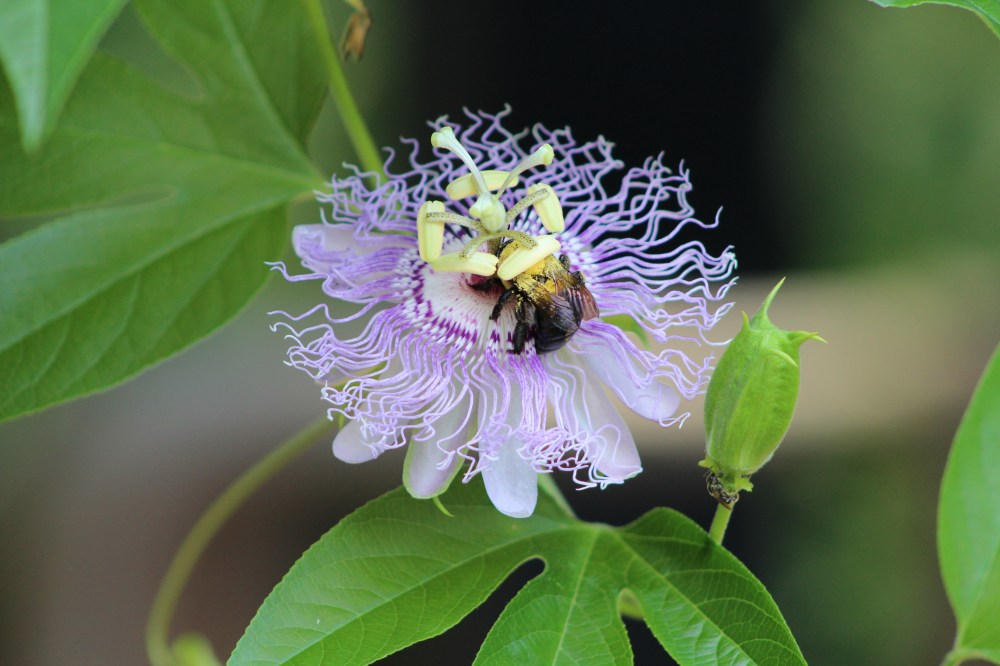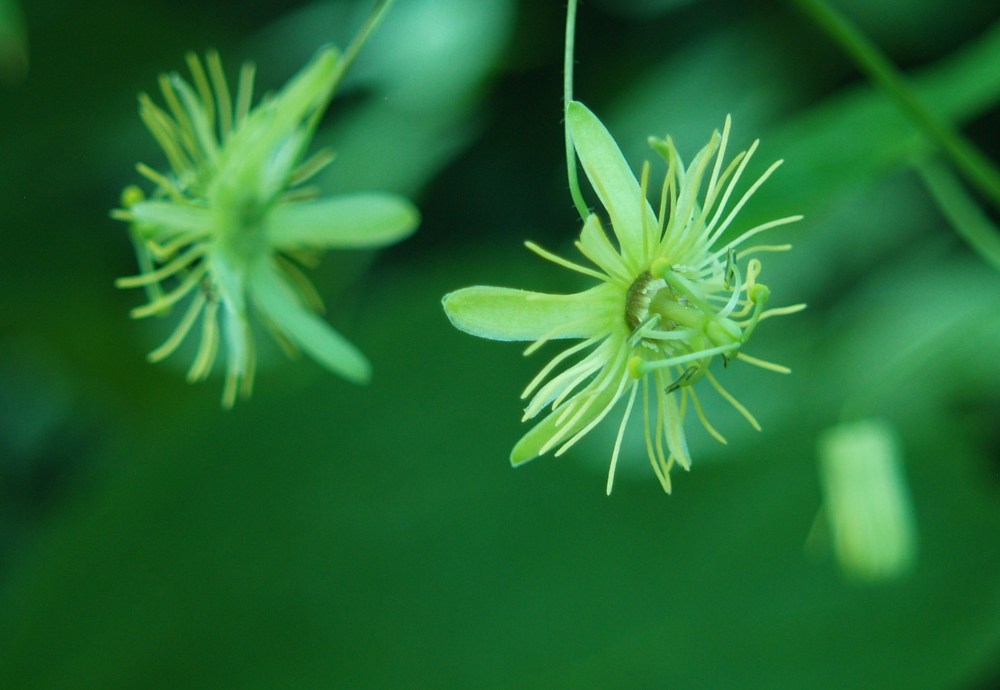I must plant another passionflower vine (Passiflora incarnata). I see others that ramble luxuriously, which mine once did, but in recent years it appears reluctantly only in late July, and of course this is too late for it to amount to much.

Often, I find it difficult to diagnose reasons that a long established plant has declined, and I cannot figure if the vine suffers due to shading or competition of neighboring shrubs and lower ground covers. A metal structure placed over the passionflower encourages a healthy vine to reach the roof line of the summer house, but I doubt it will come close this year. Probably, it will not flower, again this year.
If another passionflower vine is planted, the metal structure must be moved also, and perhaps another corner of the summer house will be more ideal. While the replacement must be one of the large, purpled flowers passionflowers, I would also like to plant another of the small, yellowed flowered Passiflora lutea (below). Today, one scrambles up through an ‘Okame’ cherry behind the koi pond, and here the planting of ‘Tardiva’ and Oakleaf hydrangeas is so dense that the tiny flowers can hardly be seen from a distance.

A second yellow flowered passionflower must be planted so that it winds through more accessible, and lower growing shrubs. Though the yellow flowered variety has climbed twenty feet into the cherry, its foliage is much less lush than the purple flowered vines, and it would barely be noticed until flowering.
Passion fruit used to be grown for fruit in Beverly Hills (in the Los Angeles region). I don’t know what was so special about that confined spot, but there were a few things that did better there than in just a short distance away. There were also a few small fields of fava beans that were alternated with other vegetable crops. The region is all urban now, with suburban development in the hills to the north. Yet, even after many decades, passion fruit vines still appear in home landscapes. Those that were grown for fruit there are not easy to kill! The flowers are one of my niece’s favorites. They grow contained but wild at both her grandparents’ homes.